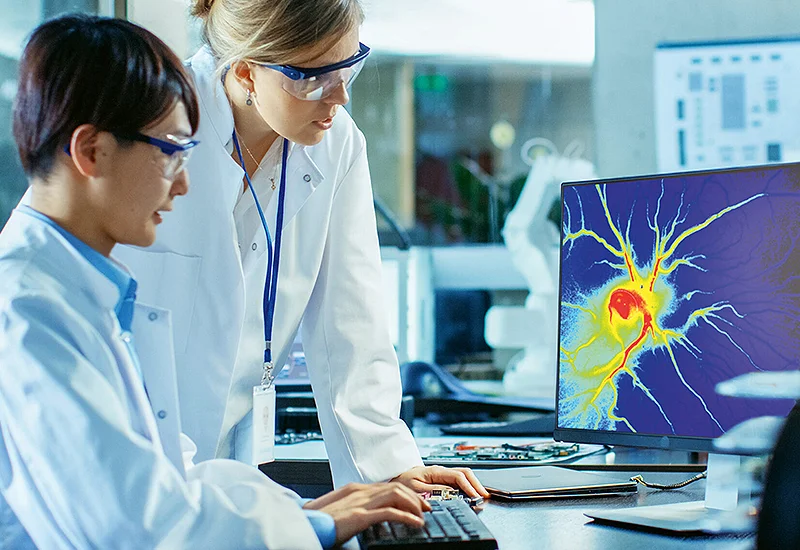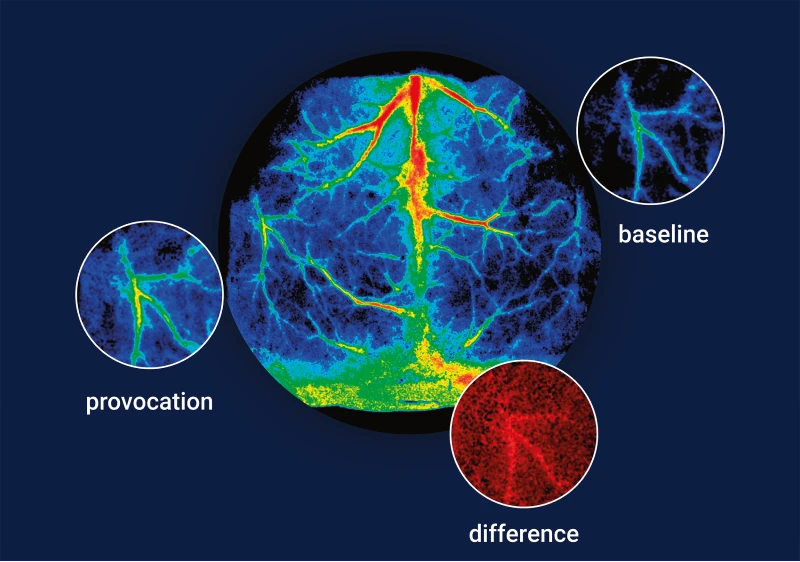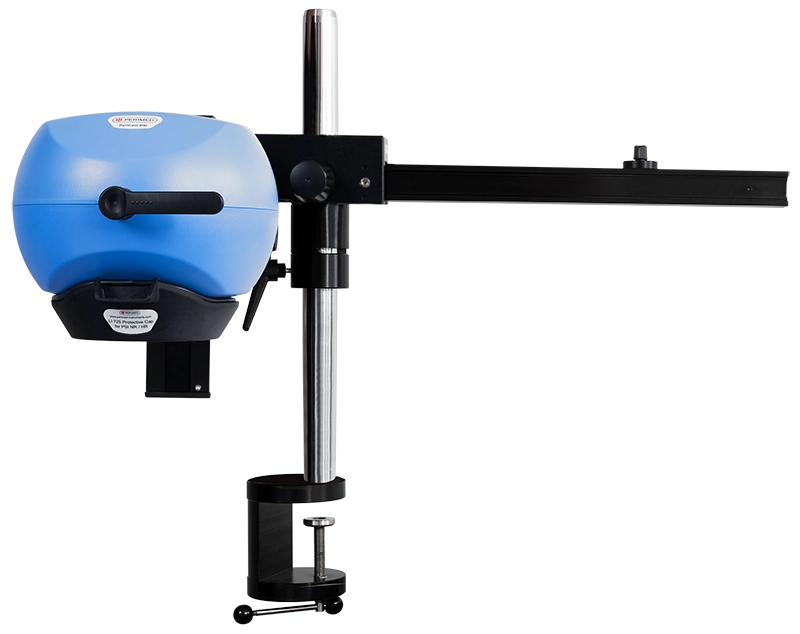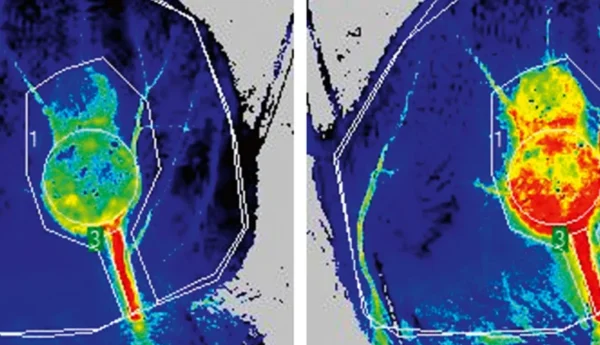CAM assay
The CAM assay is a versatile animal model for studying tumor formation, angiogenesis, and metastasis.
Preclinical researchers often face data collection challenges, like accuracy, repeatability, the need to translate data to clinical applications, and measurement tools that inadvertently introduce artifacts or stress responses in the models. Overcoming these challenges requires precise, minimally invasive tools that can capture the subtle biomarkers of disease. PeriCam PSI is a noninvasive, non-contact, and non-destructive blood perfusion imaging system that delivers and visualizes robust macro- and microcirculation insights, providing the capabilities to record and observe the effect of treatments and provocations in real-time.

Measuring microcirculation in preclinical research is useful because this is where critical biological processes like nutrient delivery, waste removal, and immune response occur. Early signs of disease, such as impaired blood flow in diabetes or inflammation in cardiovascular conditions, often appear at the microvascular level. By closely monitoring microcirculation in preclinical models, researchers can detect these early changes, evaluate the effects of interventions, and study disease progression in a way that provides valuable insights for potential clinical applications.

PeriCam PSI leverages laser speckle contrast imaging (LSCI) to assess blood perfusion in tissue at the microcirculation level with detail and precision. To meet the demands posed by highly diverse research — and clinical — settings, we’ve designed several PeriCam PSI models. PeriCam PSI HR (high resolution) works from a fixed distance and is specifically equipped to measure small animals such as rats and mice. For environments that demand versatility, PeriCam PSI NR supports a range of working distances. Both models can be upgraded with zoom functionality, combining high resolution and flexibility in a single instrument.



The subcutaneous tumor model is a popular assessment system for in vivo evaluation of cancer medicine candidates. This model often uses immunodeficient animal strains, where cultured cancer cells are implanted subcutaneously, taking about two weeks to produce a solid tumor.
Contact us
Our history is deep-rooted in microcirculation measurement and research. We are here to support you with the tools and expertise needed for effective data collection in preclinical research. Contact us to learn more about how our solutions can support you and start changing outcomes.
References